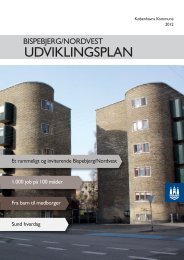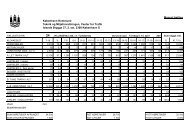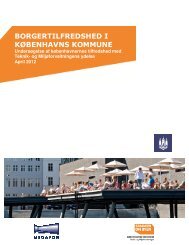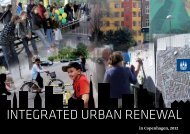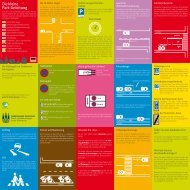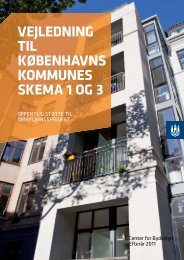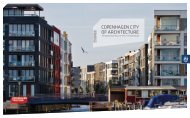SUSTAINABILITY IN CONSTRUCTION AND CIVIL WORKS - Itera
SUSTAINABILITY IN CONSTRUCTION AND CIVIL WORKS - Itera
SUSTAINABILITY IN CONSTRUCTION AND CIVIL WORKS - Itera
You also want an ePaper? Increase the reach of your titles
YUMPU automatically turns print PDFs into web optimized ePapers that Google loves.
58<br />
Standards<br />
Households<br />
The necessary space must be set aside so that household waste can be<br />
sorted into a minimum of the following fractions:<br />
• Food waste<br />
• Paper (newspapers, direct advertising material, magazines, etc.)<br />
• Cardboard<br />
• Batteries<br />
• Glass (bottles, jars, etc.)<br />
• Garden waste<br />
• Plastic packaging<br />
• Metal<br />
• Hazardous waste (leftover paint, etc.)<br />
• Bulky waste (PVC, impregnated wood, electronic equipment,<br />
• refrigerator/freezers, and other mixed bulky waste)<br />
Bins for food waste must be placed inside buildings and paper must be<br />
collected in close proximity to residential stairwells. It would be most<br />
effi cient to collect cardboard and batteries in the same place. The other<br />
fractions can best be collected for several buildings at a site within<br />
walking distance of all of them. Fractions that are not covered by the<br />
bulky-waste system, such as plastic, metal, and construction waste, can<br />
be transported from a common collection site to the waste station by the<br />
person responsible for waste management/janitor.<br />
For hygienic reasons, the collection site for food waste should be placed<br />
further than fi ve meters from windows on residential rooms or kitchens<br />
and should be located in the shade.<br />
As a rule, 1/2 sq. m. per unit should be set aside for bulky waste, but an<br />
evaluation must be made each time, depending on the number of units,<br />
the condition of the site, etc.<br />
Alternatives can be found, for example mobile suction, in small courtyards<br />
where special attention must be paid to recreational facilities or<br />
the work environment.<br />
It must be possible to compost garden waste from recreational areas.<br />
Space must consequently be set aside for the purpose.<br />
Use<br />
Users must be given good and logical information on waste management.<br />
This can be provided by the janitor or another person responsible<br />
for waste management or through printed information and signs. Information<br />
can be obtained free of charge from the Environmental Department,<br />
either in person or by ordering it on the department’s website.<br />
(See the link at the back of this booklet.)<br />
Residents must be able to recycle directly and minimize waste at a<br />
“trading post” in the area set aside for bulky waste or e.g. using special<br />
shelves for recycling items.<br />
Commercial and construction waste<br />
Commercial waste must be sorted into all recyclable fractions, hazardous<br />
waste, incinerable waste, and waste to be land fi lled.<br />
Permission must be obtained from the Environmental Department to<br />
recycle slightly contaminated surplus soil from a project on a building’s<br />
own site. Clean surplus soil must be used in recycling before slightly<br />
contaminated soil.<br />
The Environmental Department can require that special types of waste<br />
(e.g. slag from incineration) be recycled in large civil-works projects if<br />
use can take place under environmentally acceptable conditions.<br />
Stone material must be crushed and reused on the site to the extent<br />
that the Environmental Department determines that this is acceptable<br />
considering the surroundings. Permission to do so will be granted by the<br />
Environmental Department.<br />
The developer must ensure that the contractor sorts and minimizes the<br />
amount of construction waste and discarded materials through planning,<br />
building management, logistics, supervision, and quality control.




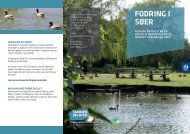
![Lokalplan 301[1] - Itera](https://img.yumpu.com/49288321/1/184x260/lokalplan-3011-itera.jpg?quality=85)
